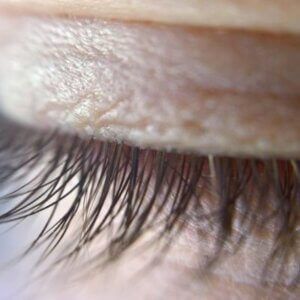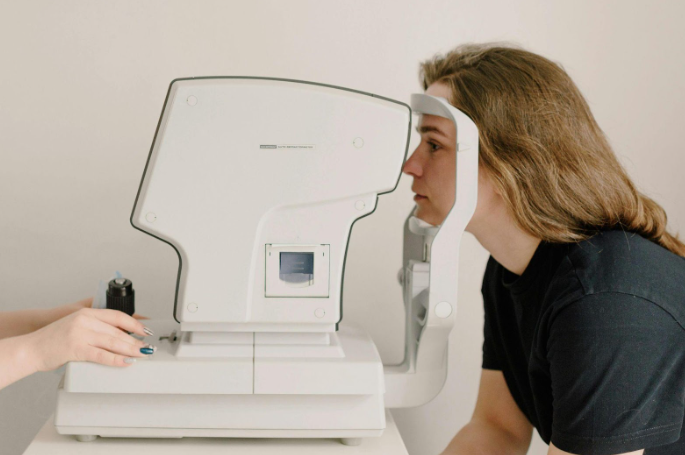3 Steps To Get Rid Of A Stye On Your Eyelid
- This blog has been updated
A stye, also called a hordeolum
, is a small, red, painful lump that grows from the base of your eyelash or under your eyelid. Most styes are caused by a bacterial infection. Styes are common in children, people with chronic lid infections, and those with diabetes. You can also get a stye if you have blepharitis
, which can make the base of your eyelashes red and swollen. Styes can be quite painful and unsightly, with prominent swelling and redness.
under your eyelid. Most styes are caused by a bacterial infection. Styes are common in children, people with chronic lid infections, and those with diabetes. You can also get a stye if you have blepharitis
, which can make the base of your eyelashes red and swollen. Styes can be quite painful and unsightly, with prominent swelling and redness.
There are two kinds of styes, or hordeolums:
- External hordeolum: A stye that forms at the base of your eyelash, usually caused by an infection in the hair follicle. It might look like a pimple.
- Internal hordeolum: A stye inside your eyelid, usually caused by an infection in an oil-producing gland in your eyelid.
Styes are not to be confused with another common eye condition called a chalazion . A chalazion is a swollen bump on the eyelid, usually caused when an oil gland in the eyelid becomes clogged. A chalazion may start as an internal hordeolum, and initially it typically causes little or no pain. But as the chalazion grows, your eyelid may become red, swollen, and tender to touch. If the chalazion gets large enough, it can press on your eye and cause blurry vision.
It can be hard to tell the difference between a stye and a chalazion, but here are the main differences:
- A stye often appears at the edge or base of the eyelid and often swells, sometimes affecting the entire eyelid. Styes can be very painful.
- A chalazion usually develops further back on the eyelid than a stye and is not usually painful, although it may be a bit tender to the touch. Rarely does it make the entire eyelid swell.
Common stye symptoms include:
- Redness and swelling
- A small pus spot at the center of the bump
- The sensation that there’s something in your eye
- Scratchiness or itchiness
- Tearing
- Sensitivity to light
- Crustiness along the base of the eyelid
What To Do If You Have A Stye
If you suspect you have a stye, or are unsure whether you have a stye or a chalazion, it’s important that you do NOT try to squeeze or pop it. Doing so could spread the infection to your eye. Avoid rubbing or scratching your eyelid as well. You also should not wear eye makeup or contact lenses while you have a stye or chalazion.
However, there are some self-care steps you can try to reduce the symptoms:
Warm compresses
Soak a clean washcloth in warm water and press it to your eyelid for 5–10 minutes at a time, 3–5 times a day. Keep the cloth warm by soaking it in hot water often. The warmth helps bring pus to the surface so the stye can drain. You can also try this with a warm tea bag. Black tea in particular has antibacterial properties that may help reduce swelling.
Clean your eyelid
You can purchase over-the-counter eyelid wipes, or mix a small amount of tear-free baby shampoo with warm water and gently wipe your eyelids with a clean washcloth. Another option is to clean your eyelid with a saline solution, which may help reduce bacteria and promote drainage. Cleaning your eyelids on a regular basis also helps prevent future styes.
Over-the-counter stye ointments
Over-the-counter stye ointments are available at most pharmacies. Ask the pharmacist if you’re not sure which brand or product is the best for your stye symptoms. Be sure to follow the instructions on the product as directed.
When Should I See A Doctor?
Most styes go away on their own in about a week, but if your symptoms are not subsiding after a week your eye doctor may need to prescribe an antibiotic cream for infections or give you a steroid shot to reduce swelling. Sometimes styes need to be professionally drained by an eye doctor, especially if they are internal or if they are affecting your vision.
If you’re experiencing redness or swelling that’s spreading around the eyes, blurry vision, vision changes, eye pain, or pus-like eye discharge, schedule an appointment with your eye doctor immediately.
Baptist Eye Surgeons is an ophthalmological practice dedicated to providing quality eye care to patients whose needs range from routine comprehensive eye examinations to the treatment of more complex vision-loss eye diseases. To request an appointment or get directions to our Knoxville and Morristown locations, visit our website. Call us at 865-579-3920 for more information or visit us online to schedule an appointment.





